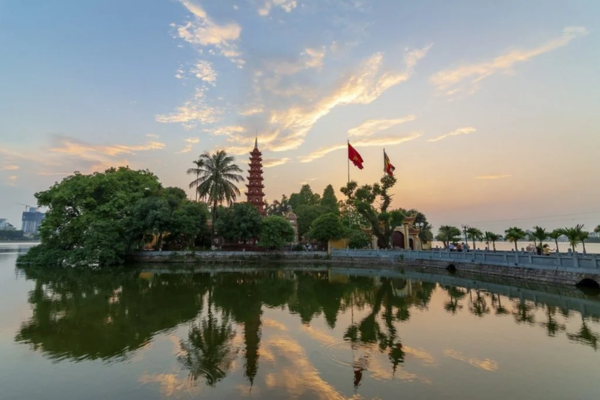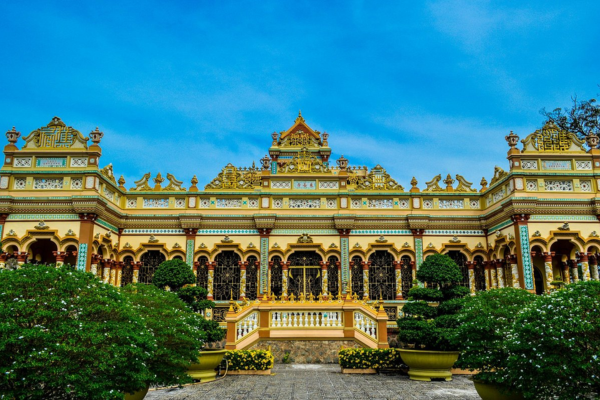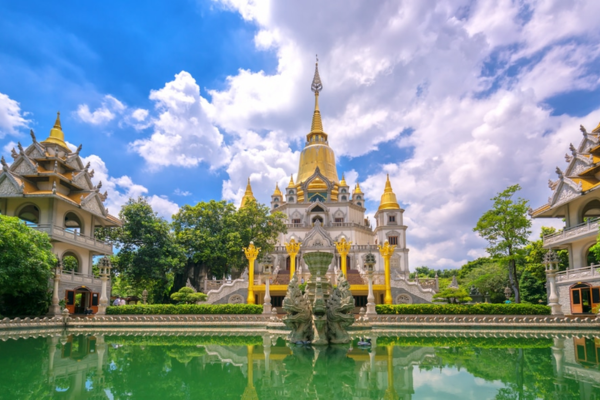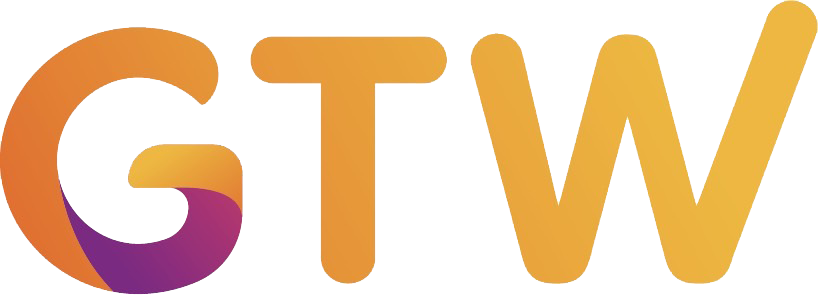


HA NOI-HO CHI MINH-CU CHI 6N7D
06 กุมภาพันธ์ 2567
ผู้ชม 157 ผู้ชม
BACKGROUND OF VIETNAM
Vietnam's early history comprises of periods of occupation by outside forces and eventual power consolidation under Vietnamese dynastic families. Ancient Vietnam was centered on the Red River Valley and was ruled by a succession of Han Chinese emperors until approximately the 10th century. The Ly Dynasty (11th-13th century) ruled the first independent Vietnamese state, which was known as Dai Viet, and established their capital at Thang Long (Hanoi). Under the Tran Dynasty (13th-15th century), Dai Viet forces led by one of Vietnam’s national heroes, TRAN Hang Dao, fought off Mongol invaders in 1279. Following a brief Chinese occupation in the early 1400s, the leader of Vietnamese resistance, LE Thai To, made himself emperor and established the Le Dynasty, which lasted until the late 18th century, although not without decades of political turmoil, civil war, and division. During this period, Dai Viet expanded southward to the Central Highlands and Mekong Delta, reaching the approximate boundaries of modern-day Vietnam by the 1750s. Dai Viet suffered additional civil war and division in the latter half of the 18th century, but was reunited and renamed Vietnam under Emperor NGUYEN Phuc Anh (aka Gia Long) in 1802.
The Nguyen Dynasty would be the last Vietnamese dynasty before the conquest by France, which began in 1858 and was completed by 1884. Vietnam became part of French Indochina in 1887. It declared independence after World War II, but France continued to rule until its 1954 defeat by communist forces under Ho Chi MINH. Under the Geneva Accords of 1954, Vietnam was divided into the communist North and anti-communist South. Fighting erupted between the two governments shortly afterwards with the North supporting communist rebels in the South and eventually committing thousands of combat troops, while the US provided large amounts of economic and military assistance, including combat forces, to the South. The US military presence reached a peak strength of over 500,000 troops in 1968. US forces were withdrawn following a cease-fire agreement in 1973. Two years later, North Vietnamese forces overran the South reuniting the country under communist rule. The conflict, known as the Second Indochina War (1955-1975), devastated the country, spilled over into the neighboring countries of Cambodia and Laos, and is estimated to have resulted in the deaths of up to 3 million Vietnamese civilians and soldiers. Despite the return of peace, for over a decade the country experienced little economic growth because of its diplomatic isolation, its conservative leadership policies, and the persecution and mass exodus of individuals, many of them successful South Vietnamese merchants. However, since the enactment of Vietnam's "doi moi" (renovation) policy in 1986, Vietnamese authorities have committed to increased economic liberalization and enacted structural reforms needed to modernize the economy and to produce more competitive, export-driven industries. Since implementation, the economy has seen strong growth, particularly in agricultural and industrial production, construction, exports, and foreign investment. Increased tourism has also become a key component of economic growth. Nevertheless, the Communist Party maintains tight political and social control of the country, and Vietnam faces considerable challenges including rising income inequality, corruption, inadequate social welfare, and a poor human rights record.
Since withdrawing its military occupation forces from Cambodia in the late 1980s and the end of Soviet aid by 1991, Vietnam has practiced a non-aligned foreign policy that emphasizes friendly ties with all members of the international community. Relatedly, Vietnam adheres to a security doctrine called the "Four Nos" (no alliances, no siding with one country against another, no foreign bases, and no using force in international relations). Despite longstanding tensions with Beijing regarding its expansive claims that overlap with Hanoi's own claimed maritime boundaries in the South China Sea, Vietnam puts a priority on stable relations with China, given its proximity, size, and status as Vietnam's largest trading partner.
HO CHI MINH CITY
Formerly and still commonly known as Saigon Vietnamese: is the most populous city in Vietnam, with a population of around 9.3 million in 2023. The city's geography is defined by rivers and canals, the largest of which is the eponymously-named Saigon River. As a municipality, Ho Chi Minh City consists of 16 urban districts, 6 rural districts, and 1 municipal city. As the largest financial centre in Vietnam, Ho Chi Minh City has the highest gross regional domestic product out of all Vietnam provinces and municipalities, contributing around a quarter of the country's total GDP. Ho Chi Minh City metropolitan is ASEAN 6th largest economy, also the biggest outside ASEAN country capital.
HANOI
Is the capital and second-most populous city of Vietnam. As evident by the literal translation of its name – 'inside the river' – portions of Hanoi's border are deliniated by the Red River and the Black River. As a municipality, Hanoi consists of 12 urban districts, 17 rural districts, and 1 district-level town Hanoi has the second-highest gross regional domestic product of all Vietnam provinces and municipalities at 51.4 billion USD, behind Ho Chi Minh City. Hanoi Capital is also ASEAN 8th largest economy after Surabaya.
In the third century BCE, the Co Loa Capital Citadel of Au Lạc was constructed in the area of modern-day Hanoi. Au Lạc then falls under China rule for around a thousand years. In 1010, Vietnamese emperor to established the capital of the imperial Vietnamese nation Dại Viet in modern-day central Hanoi, naming the city Thang Long. It served as the capital of French Indochina from 1902 to 1945. After the August Revolution, the Democratic Republic of Vietnam designated Hanoi as the capital of the newly independent country. In 2008, Ha Tay Province and two other rural districts were annexed into Hanoi, effectively tripling Hanoi's area.
6 NIGHT / 7 DAYS
DAY 1: HANOI – ARRIVAL (-/LUNCH/DINNER) MORNING AIRLINE
Arrive at Noi Bai International Airport, meet your driver for an airport transfer. The driving distance is approximate 45 minutes from airport to Ha Noi city. Lunch at local restaurant. Afternoon, We will visit West Lake, Buddhist Tran Quoc Pagoda, One of the oldest pagodas in Vietnam. Then we visit Hoan Kiem Lake, But Tower, Ngoc Son Temple, Te Huc Bridge, Ly Thai To Moutment, St Joseph Cathedral. Free time shopping tour: Trang Tien Plaza, Ha Noi Old Quarter, Dong Xuan Market, Night Market (Friday to Sunday). Dinner at local restaurant. Overnight at hotel in Ha Noi
DAY 2: HA NOI – HA LONG ON BOARD (BREAKFAST/LUNCH/DINNER)
Morning : Driver and Guide pickup at 8:00 AM from your hotel for transfer to Ha Long Bay, which is about 160 km or 3.5-hour drive away. You will see some rural areas of the Red River Delta with plenty of chances to take photos of Vietnamese farmers working in paddy fields and you may stop on the way to admire the local scenery. Arrive in Ha Long City at 11:30 AM and check in aboard the booked junk when your journey across Ha Long Bay starts. After lunch, take a short trek to a nearby summit for a panoramic view of the bay dotted with golden sails, go swimming on a quiet beach or sunbath on the sundeck. Later in the afternoon, you will visit an interesting fishing village with an opportunity to interact with local people. Back onboard enjoy a lavish dinner and enjoy the bay view at sunset. Spend a night on board.
DAY 3: HA LONG – HA NOI (BREAKFAST/BRUNCH/DINNER)
In the morning, refresh your body and mind with a Tai Chi exercise on the sundeck at the break of dawn. Have tea and coffee onboard, continue exploring Ha Long Bay sailing across its 2000 islets and visiting some of its major highlights. Normally, check out at 09:30, have a buffet brunch while cruising back to shore. Disembark at 11:00 AM to transfer to Hanoi capital. Drive back with your Driver and Guide to Ha Noi. Free time for shopping or discovery the daily life of the local people. Dinner at local restaurant. Overnight at hotel in Ha Noi
DAY 4: HA NOI – HO CHI MINH (BREAKFAST/LUNCH/DINNER) AFTERNOON AIRLINE
Morning, Drive to the historic complex of Ba Dinh, visit Ba Dinh Square, where the late President Ho Chi Minh declared Vietnams Independence on 2 September 1945, Ho Chi Minh Complex : Ho Chi Minh’s Mausoleum, His house (closed on Monday, Friday and 15 June – 15 Aug) and continue to the One Pillar Pagoda, the must-see monument in Hanoi – It is an ancient Buddhist pagoda, built in the early 11th century in the reign of King Ly Thai Tong, all construction supported by only one pillar, resembling a Buddhist lotus. We will go shopping in Vincom. Lunch at local restaurant. Free time for shopping or discovery the daily life of the local people. Transfer with Driver and Guide to Noi Bai Airport and take flight to Ho Chi Minh. Dinner at local restaurant. Overnight at hotel in Ho Chi Minh
DAY 5: HO CHI MINH – MY THO (BREAKFAST/LUNCH/DINNER)
After arrival My Tho, we take a local boat along Dragon Island, Unicorn Island, Phoenix Island, Turtle Island and stop at the famous Unicorn Island. While at the Unicorn Island, you will visit natural pure honey at the bee keeping farm. Taste some honey tea…there, we continue on motor boat trip to Ben Tre province to visit a handmade coconut candy workshop. Then we get back to a boat go through the lush, green canals that are so beautiful for photography. We stop at local restaurant for lunch. After that visit to another area on the Unicorn Island to visit the tropical fruit garden, enjoy the fruits & listen to the Southern traditional music. After feasting on a huge lunch we return to Ho Chi Minh. Free at leisure at market. Dinner at local restaurant. Overnight in Ho Chi Minh.
DAY 6: HO CHI MINH – CU CHI TUNNELS (BREAKFAST/LUNCH/DINNER)
Morning, take a half-day tour to the Cu Chi Tunnels, The location of the tunnels was of significant strategic importance: they’re at the end of the infamous Ho Chi Minh Trail, and within striking distance of the southern Vietnam capital. Initial construction started in 1948 when the Viet Minh required somewhere to hide from French air attacks, and by 1965, the tunnel complex was estimated to consist of 200 km of tunnels. It included, hospitals, schools, meeting rooms, kitchens, and sleeping quarters. Life was difficult for the inhabitants, and to protect against outside intruders, booby traps were laid throughout the complex. Back to Ho Chi Minh City and spend time at leisure. Lunch at local restaurant. Afternoon: Tour in the city starting with Saigon Notre-Dame Basilica, a neo-Roman cathedral built over 130 years ago by the colonial French with materials entirely imported from Marseilles and stained-glass windows from Chartres. Next, visit Sai Gon Post Office, a fine colonial building which was designed and built in the early 20th Century by the famous French architect Gustave Eiffel, War Museum. Shopping tour: Ben Thanh Market, Lon Market, Saigon Square, Miss Ao Dai…. Dinner at local restaurant. Overnight at hotel in Ho Chi Minh
DAY 7 : HO CHI MINH – DEPARTURE (BREAKFAST) MORNING AIRLINE
Free time for shopping or discovery the daily life of the local people. Transfer to Ho Chi Minh International Airport and take flight to Sweet home. End Tour
PACKAGE INCLUDES:
• All airport-hotel-airport and tour excursion transfers with ENGLISH speaking guide
• Full board with Vietnamese or Chinese food or seafood
• Sightseeing tour in Ha Noi, Ha Long, Ho Chi Minh, Cu Chi, My Tho, entrance fees
• Mineral water 1 bottle per pax per day on car
• Foc base on DBL/ TWN/ Triple sharing
• Package Ha Long on board
TOUR POLICY & NOTES :
• Infant below 2 years old sharing same room with parents is charged for 10%.
• Child below 6 yrs. old without extra bed and sharing same room with parents is charged for 50%.
• Child below 6 yrs. old sharing same room with 1 Adult is charged for 85%
• Child below 11 yrs. old No extra bed & sharing same room with parents is charged for 75%
• Child below 11 yrs. old with extra bed & sharing same room with parents (Triple room) is charged same as adult
• Child below 11 yrs. old sharing same room with 1 Adult is charged same as adult
NOTES:
• What to bring: Original passport, swimming suites, sun glasses, insect repellent
• Special requests on food (diet, halal or vegetarian food) to be advised before departure
• If entrance fees, petrol for cars, boats…change new price in the future. We will inform you late
• Hotels and Ha Long Bay cruises are sharing. They are not charter
• Quotation base on 3* standard cruise. If pax groups want to stay in 3* superior, 4*, 5* cruise. Please see surcharge to 3* superior cruise, 4*, 5* in hotel for option board
• The itinerary may be subject to change due to the bad weather condition
• Surcharge weekend in Sa Pa is from Friday to Sunday
PACKAGES IS NOT APPLIED FOR THE PERIOD AS – SURCHARGE TO BE ADVISED UPON REQUEST.
• Lunar New Year : 02 Feb Jan – 24 Feb 2024
• Reunification Day & Labor Day : 29 Apr 2024 – 02 May 2024
• National Independence Day : 31 Aug 2024 - 03 Sep 2024
• Christmas - New Year : 24 Dec 2024 - 05 Jan 2025
PACKAGE EXCLUDES:
• Personal expenses such as drinks at meals, travel insurance, insurance for cover payment for covid - 19 treatment, upgraded meals
• International and Domestic Air tickets, Visa, Bank transfer fees and other not mentioned as the above
• Halal food and Indonesia, Chinese… speaking guide
 สอบถามข้อมูลเพิ่มเติม
สอบถามข้อมูลเพิ่มเติม  Call center
Call center 
 TH
TH  English
English



